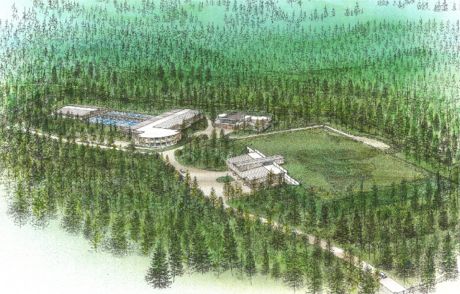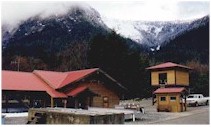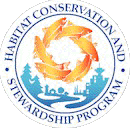Seymour Valley Community Newsletter
July 15, 2002
Issue 5
info@seymourvalley.ca
Edited by Bill Maurer
Important Notice
Seymour Local Plan
Draft Presentation to SVCA
North Van District Hall
July 30, 2002
7:00pm
Upcoming Meetings
| March 11th | Speedhump Council Meeting |
| March 13th | Riverside Traffic Advisory Committee Meeting |
| March 14th | Bear Network Meeting |
| March 21st | FONVCA Meeting |
| April 3rd | SVCA Executive Meeting |
Active Issues
If you have any neighbourhood issue you are interested in becoming the contact for then get it added to the issues list and keep people informed or get them involved in the cause. You can do this by sending an email to issues@seymourvalley.ca or calling me at 929-9442.
Note that each issue has its own mailing list which contains all email messages sent to the Email List address. You can either view the messages via a web browser or you can subscribe to one or more lists and the messages will be forwarded to you as they arrive.
Traffic Calming
|
Overall Preference
for Speed Humps |
Preference for
Alternative Traffic Calming Solutions |
At the December 17th meeting, district council voted to conduct an independent survey of residents affected by the Riverside Drive speed humps to confirm the level of support for them. The results of this survey are in and will be used to guide the Traffic Calming Advisory Committee with the future direction of traffic calming solutions for Riverside Drive. It seems fairly clear that there is not a great deal of interest in physical traffic calming measures among residents.
At the March 11th council meeting the Seymour Valley Community Association will officially request council to remove the speed humps on behalf of the overwhelming wishes of the residents. A number of councillors have not yet decided as to how they will vote. Come to the council meeting and let them know how you feel. The first 30 minutes of the council meeting is reserved for public input. Anybody wishing to make their wishes known can speak for up to 2 minutes during this input period. Your presence at this meeting will go a long way to show council that residents are as concerned today as they were on December 17th about this particular traffic calming solution.
The next Riverside Drive Traffic Calming Advisory Committee meeting is scheduled for March 13th. The agenda for this meeting indicates a review of the MarkTrend report and will hopefully mark the beginning of an acceptable and non-divisive traffic calming solution for Riverside Drive.
SVCA Organization
The SVCA Board has met twice since the AGM. On Feb 13th Michele Payne was elected Secretary/Treasurer, Harry MacGucken was elected Vice-Chair, and Bill Maurer was elected to Chair. Andrew Karlstrom presented a draft constitution and by-laws which were discussed at the March 6 meeting. Final copy is now being prepared and will be presented for final approval at the next meeting.
Bear Awareness by Barb Murray
Hey All You Seymour Valley Senior High Students want to start a ‘Bear Aware Club’ at your school? Save a bear or two and at the same time earn hours toward your 30hr. work experience requirement!
For more information Call Lora Hargreaves, Education Coordinator at Grouse Mountain Refuge for Endangered Wildlife, @ 984-0661 ext 5902 or e-mail lhargreaves@grousemtn.com.
Black Bear Task Force
Call for Volunteers!
The crocuses are up and soon so will our mountain forest Black Bears---and they will be HUNGRY for the garbage they fed on all last year! If the berry crop is poor more bears will be on our doorsteps. Lets be Bear Prepared!
Last Bear Season the NV District Bear Network compiled over 260 calls from various authorities, 44 calls came from the Seymour Valley Community. It is believed that 5 different bears roamed through our backyards over the season. Unfortunately, two bears were killed by the authorities on Nov. 10’01 and they both could well have been bears known to us. The authorities say they had no choice but to destroy these bears because they were so totally habituated to garbage and had lost all fear of people.
Establishing a Task Force in the Seymour Valley that can help EDUCATE, EDUCATE, EDUCATE will go a long way toward our community becoming ‘ BEAR SMART’. Whistler,
Revelstoke, Canmore, Kamloops and Prince George are all at different phases of their programs with great successes reported.
We live in Bear Country and I think we all agree it is not necessary or acceptable to manage our nuisances with a gun. We can do better and IT IS possible to Co-Existence with our Black Bears.
Volunteers for the Task Force would need to attend one or two meetings over the season (May-Nov), talk to
neighbours, distribute flyers, report bear sightings, etc... whatever schedules allow.
We need volunteers from both sides of the river, our wildlife corridor is a vast one.
Please call Barb Murray to get involved or for more info. 924-0807 or email:
bears@seymourvalley.ca
Block Watch
Break and Enters increased dramatically in zone 8 (Seymour Valley) in 2001. The statistics are as follows:
2000 - 5 (4) 2001 - 16(11)
The numbers in brackets indicate break and enters that occurred in non-BlockWatch areas. The Seymour Valley is one of the newest but still least organized on the North Shore with only 5 organized blocks at present. If you are interested in organizing your block, call Glen Parker 929-8450 for details or email blockwatch@seymourvalley.ca for info. Blocks which are currently not organized include Riverbank, Rivergrove, Riverside 1200 - 2200, Swinburne, Edgewater, Heritage Blvd, Hilary Place, Tanager Blvd, and Seymour Blvd 300-700.
Lower Seymour Conservation Reserve
Monitoring and Advisory Committee
by Willy Schuurman
Current Water Projects
The Greater Vancouver Regional District (GVRD) has a number of water projects planned in the Lower Seymour Conservation Reserve (LSCR), formerly the Demonstration Forest, that effect land use. Projects include:
- Dam Upgrade: An upgrade of the Seymour Falls Dam is needed to ensure it performs safely in the event of an earthquake. Constructed in 1961, the dam does not meet current seismic standards. Upgrading work will begin in 2004, and will take approximately three years to complete. The project involves strengthening both the concrete and earth fill portions of the dam.
- Water Main Construction. This involves laying and twinning new 5 and 7 foot diameter mains along the Pipeline road from the dam to Second Narrows. It was this planned work that resulted in the construction of the dedicated Recreational Pathway paved road that is now complete. Water Main construction will occur in stages right through to 2009.
- Water Filtration Plant Construction planned for 2002, completed in 2007.
The Water Filtration Plant construction project will have great impact on the long term future of the LSCR and planning is underway so the rest of this update deals with those plans.
Capilano Water to be pumped to LSCR for Filtration
Project Background. The GVRD is planning to build water filtration capacity for some time to improve the quaility of our water supply. The Water Filtration project is huge - 14 hectares of the LSCR will used for construction of the plant and underground holding tanks as pictured below. The plant will be located at the Rice Lake gates, just east of Lillooet Road and occupy an area southward. The filtration plant is being constructed for a number of reasons, primarily to eliminate turbidity (cloudy water) caused by heavy winter rain runoff in the mountains. For GVRD information about the Seymour filtration project, see Seymour Filtration Plant Project Overview

Artist rendering of possible design for filter plant
Related projects. The GVRD has three primary supplies for the Lower Mainland's water: Capilano, Seymour and Coquitlam reservoirs. A new water treatment facility has been completed in 2000 for Coquitlam water supply that included ozone treatment. Planned ozone treatment upgrades to the Capilano facilities was cancelled since the region's medical health officers now require significantly lower levels of turbidity in drinking water than previously allowed. Filtration is apparently the best treatment option to meet these new turbidity levels, and the GVRD now proposes to filter Capilano water by about 2006. The GVRD has been exploring three alternative sites for the Capilano filtration plant: the construction of new filtration plant at the Capilano source on one of two possible local sites OR pumping the water to the an expanded Seymour plant and treating the water in the LSCR facility.
What's New. The GVRD is favouring the option that will see Capilano water piped to the new LSCR facilities for filtration and chlorination. Because water in Capilano Lake exceeds the acceptable level of turbidity on an average of 55 days a year, the Capilano supply and treatment system would be shut down during the winter months and portions of the spring and fall. Filtration of Capilano water would see water pumped through a 7.6- kilometer long, three-meter diameter rock tunnel. Treated water would be returned to Capilano through a parallel 7.6-km rock tunnel. The tunnel would be in bedrock, 80 to 200 meters below the surface. Residual sludge from the construction of the tunnels will be stored at the gravel pit at the 5 km point on the pipeline road in the LSCR and used for the future dam upgrade project.
Community Involvement Wanted. The decision to tunnel water to Seymour for filtration is influenced by a number of factors including financial consideration, technical analysis, environment and community impacts. The Grousewoods/Capilano Community Association opposition to the negative community impacts of construction at the proposed Capilano sites has been publicized well. While expansion of the Seymour facility will disrupt the communities on Lillooet Road, the community and impacts are smaller. In the Seymour area, we need to be involved in the public input process to ensure that our smaller community needs are being considered in these very large projects. If you'd like to be involved through the SVCA, email: lscr@seymourvalley.ca
LSCR Links
|
|
Acronyms
The complaints department has received a number of objections regarding the overuse of acronyms in community discussions. For those acronystically challenged among you here is a list of some of them and what they stand for. Knowing too many of these is bad for your health!
| DNV aka NVD | District of North Vancouver |
| FONVCA | Federation of North Vancouver Community Associations |
| SVCA | Seymour Valley Community Association |
| LSCR | Lower Seymour Conservation Reserve |
| GVRD | Greater Vancouver Regional District |
| CMAC | Community Monitoring and Advisory Committee |
| TPAC | Transportation Planning Advisory Committee |
| APC | Advisory Planning Commission |
| TTAC | Technical Transportation Advisory Committee |
| OCP | Official Community Plan |
| NVC | City of North Vancouver |
| BEARS | Bear Education Awareness Resource Society |
| NVREC | North Vancouver Recreation Commission |
| LMTAC | Lower Mainland Treaty Advisory Committee |




